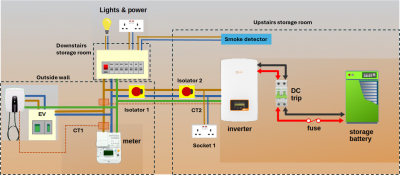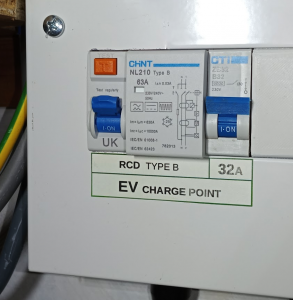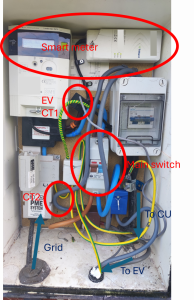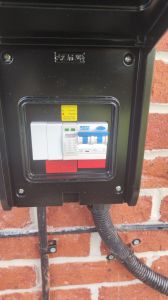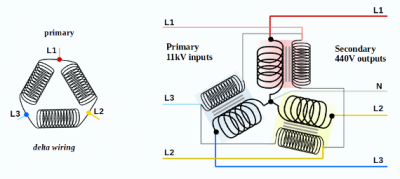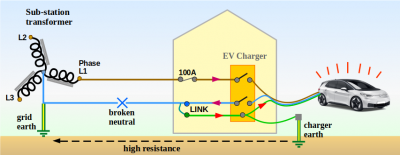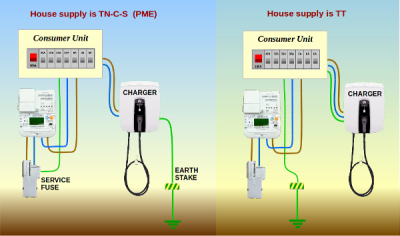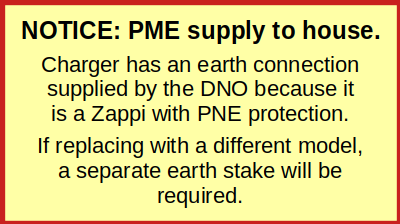Posted by: @howerpieceThanks for your replies. That is very clear. I recently have the EV charger installed, but I don't want the inverter to do anything with the EV charger. So for the CT in this case, I will install it after the live wire after the EV but before the inverter and the customer unit, right?
I don't quite follow your description but in my case I have the CT around my main incoming supply. I only charge my EV during off peak hours (e.g. 1am to 6am). I configure the battery to be in "charge mode" during these hours which recharges the battery and disables the discharge function. Whilst the inverter can 'see' the EV charger drawing current it doesn't act on it.
There have been a couple of very infrequent occassions where I've needed a top up charge on my EV during the day. In these cases I've lowered the charge rate of the EV charger through its app from 32A down to 8A for a few hours. This enables me to draw from the house battery rather than peak electricity. Not particularly efficient and not particularly cost saving but does my bit for grid demand balancing haha.
Posted by: @howerpieceI recently have the EV charger installed, but I don't want the inverter to do anything with the EV charger. So for the CT in this case, I will install it after the live wire after the EV but before the inverter and the customer unit, right?
Hmmm. I think this diagram shows what you'd like, but I'm unsure whether it's permitted
To obtain consent from your DNO for installation of a G98 certified inverter, the installation must comply with what the manufacturer specified when that inverter was entered onto the 'approved products' list held by the Electrical Networks Association (ENA).
The usual condition is that the CT Clamp must be sited immediately after the meter.
The only company who have products certified differently is SunSynk.
Their software has been assessed so as to guarantee zero export to the grid.
That also allows you to have a Sunsynk inverter larger than the 3.68kW (16A) which usually applies to grid-tied inverters.
The above diagram (if it complies with the regulations) could only provide the separation of EV Charger and the rest of the house if the inverter was a SunSynk model.
Copy my diagram in an email to SunSynk and ask them if placing the CT clamp in that position
- is permitted
- would prevent the house battery from supplying energy to the EV charger
Save energy... recycle electrons!
@majordennisbloodnok Thanks for your suggestion. I find a good guide for the Modbus home assistant integration for Solax. https://homeassistant-solax-modbus.readthedocs.io/en/latest/installation/
Which model do you recommend? Are they G98 certified?
Posted by: @howerpiece@majordennisbloodnok Thanks for your suggestion. I find a good guide for the Modbus home assistant integration for Solax. https://homeassistant-solax-modbus.readthedocs.io/en/latest/installation/
Which model do you recommend? Are they G98 certified?
I’m not any kind of expert, @howerpiece, so I’m not going to recommend any model. All I will say is that I have a Growatt SPH5000 and it’s been working fine.With 20:20 hindsight I suspect other alternatives might have been slightly better but it’s by no means a disappointment. Whether it would be the right fit for you, though, is absolutely not something I could judge.
That said,I do now have some experience of getting Home Assistant talking to it so if you do choose such a beast that’s when I can chime in with a bit of real help.
105 m2 bungalow in South East England
Mitsubishi Ecodan 8.5 kW air source heat pump
18 x 360W solar panels
1 x 6 kW GroWatt battery and SPH5000 inverter
1 x Myenergi Zappi
1 x VW ID3
Raised beds for home-grown veg and chickens for eggs
"Semper in excretia; sumus solum profundum variat"
@transparent Exactly as your diagram. I updated your diagram which fits my case.
I currently have a Zappi installed, so that I can use octopus intelligence go. A good feature of this is that you can charge your car even out of the off-peak hour (23:30-5:30). The Zappi already have one CT (CT1) from the meter. SunSynk is a good option but it might be over my budget. My daily electricity assumption is about 9kwh and the peak power should be less than 3.68kw. If the position of CT2 is not permitted, I can always put it in the location of CT1 and do the charging with a schedule similar to @KoRWraith .
I also plan to install a socket near the inverter, this is used for the mesh wifi box which I already have. Then the Modbus integration could be realized. @majordennisbloodnok It will connect with the grid side with the current design. I am not sure it is the best practice. It could also connect to the consumer unit which means extra wiring, or connect to the EPS side of the inverter.
@majordennisbloodnok my earlier plan is to have Growatt SPH3000 since I have a much lower peak power assumption and the G98 process could be easier since it is less than 3.68kw. So the Modbus home assistant also works for your Growatt SPH5000 model. That is good news.
Posted by: @howerpiece@majordennisbloodnok my earlier plan is to have Growatt SPH3000 since I have a much lower peak power assumption and the G98 process could be easier since it is less than 3.68kw. So the Modbus home assistant also works for your Growatt SPH5000 model. That is good news.
The G98 process wasn’t a problem at all from an inverter point of view since the 5000 can have its export rate limited to comply. The problems were all related to the combined administrative capabilities of the DNO and my installer (in stark contrast to the efficiency of the different guys who did my ASHP at the same time).
105 m2 bungalow in South East England
Mitsubishi Ecodan 8.5 kW air source heat pump
18 x 360W solar panels
1 x 6 kW GroWatt battery and SPH5000 inverter
1 x Myenergi Zappi
1 x VW ID3
Raised beds for home-grown veg and chickens for eggs
"Semper in excretia; sumus solum profundum variat"
That's an impressive piece of copy & paste @howerpiece
If you'd like a copy of the original, it's in Libre-Office Draw (ODT) format.
I deliberately do that so that others can re-edit without having to buy a specific editing package.
DM me with an email address if you'd like it.
Let's deal with CT2 first.
I don't know if the Growatt inverter you're considering has the option to set 'Export to Grid' as Zero.
It's not a feature which Growatt has had certified under the G99 regulations.
However, G99 won't matter if you only ever install the one inverter.
G99 applies where there is more than one device which can potentially export to the grid.
For most home owners, that occurs when they have one inverter with solar-inputs, and another incorporated within the storage battery.
If you can't set Export to Zero for that inverter, then charging the EV will preferentially take stored charge from the in-home battery.
As for the EV charger... I had deliberately omitted earth wires on my diagram in order to make it generic.
So I'm just checking if the earth wiring as shown in your diagram is safe under fault conditions.
a: Can you tell us if your house has its own earth stake?
b: And can you please post here a photo of the Service Fuse where the grid connects into your house?
c: And another photo of the trips which connect to your Zappi, which I've shown with green levers?
The Zappi has different safety protection to many other EV chargers.
There are others here on the Forum with Zappi chargers who have already been commenting on that.
The above photo shows the trips which supply my EV Charge Point.
My house does have its own earth rod, rather than the earth being provided by the DNO.
Save energy... recycle electrons!
@transparent To answer your questions.
a. I am not sure. I guess the DNO supplies it although this house is 7 years old.
b. See the picture. It also shows the potential CT2 location.
c. Zappi trips
So for my case, do I need to do G99 or G98? Do you have an example or template?
That's now a lot clearer @howerpiece
The earth is indeed provided by your DNO.
It's derived from the Neutral wire connecting your house to the local substation.
Their earth connection for you to use is the green/yellow wire emerging from the right of the Service Fuse, behind the red circle labelled CT2.
Here's a schematic of your substation transformer, which is in Delta-Wye configuration.
The diagram on the left shows the Delta winding arrangement used for the 11kV incomer,
and the diagram to the right adds the wye-format of the 440v secondaries
The Neutral supply comes from the centre of the Wye windings, and that's connected to earth at the transformer end.
When an EV Charger is installed you must not simply add a local earth-stake at your end when a house is supplied by PME (Protective Multiple Earth).
If there was ever a fault in the Neutral wire between you and the transformer, the bodywork of your car would become live. 😲
However, an EV charger should have an earth for safety.
So the correct way to achieve this for a PME supply is to provide a separate earth stake solely for the charger.
You don't have such an earth.
I believe the reason is due your charger being a Zappi.
I'm not sufficiently au fait with how the Zappi design addresses this issue, but it's serious enough that you ought to satisfy yourself that the Zappi is indeed installed correctly.
Perhaps @editor can help to direct a Zappi user with technical knowledge to respond here please?
Just because a guy called Transparent suggests something on this forum is insufficient basis on which to stake your family's safety!
Save energy... recycle electrons!
@transparent I have a Zappi and I don't have a separate earth stake. My understanding is the Zappi has something called PEN fault detection which means a separate earth isn't required.
I'm not an expert by any means but that is what I remember when I asked the installer.
Thanks @gunboatdiplomat
That's progress.
Is your house also PME, with an earth wire emerging from the Service Fuse?
And does your Zappi have an earth connection back to that earth wire from the Fuse?
I'm still slightly nervous about a safety arrangement which applies only to that particular model of charger.
If it were my house, I'd be printing two labels, and fixing them inside both the meter box and the wall-box to which the charger itself is connected.
Save energy... recycle electrons!
- 26 Forums
- 2,396 Topics
- 54.3 K Posts
- 382 Online
- 6,077 Members
Join Us!
Worth Watching
Latest Posts
-
RE: Recommended home battery inverters + regulatory matters - help requested
This probably makes it simpler to see... ...
By Batpred , 8 minutes ago
-

RE: Setback savings - fact or fiction?
Hi @toodles…. Comfort is, of course an essential need o...
By SUNandAIR , 8 minutes ago
-
RE: Fan is clipping ice build up from the front of unit.
@editor Ta Yes mine is missing, I hope intentional...
By Papahuhu , 23 minutes ago
-
RE: New Mitsubishi Ecodan 11.2kW installation - L9 errors and maybe more
OK thats great, so basically the mixing valve is disabl...
By JamesPa , 31 minutes ago
-

RE: Running from backup generaor in powercut?
Our DNO has updated our restore time to 21:00, after th...
By Mars , 31 minutes ago
-
RE: ASHP Energy Consumption: Aira 12kW heat pump
This would help, electric showers are very power hungry...
By Grantmethestrength , 53 minutes ago
-
RE: Help me keep the faith with my air source heat pump installation
@adamk I'm observing my own system at low temperatures ...
By dr_dongle , 5 hours ago
-

RE: Free Ecoheat Heat Pump Install
@deltona Yes older houses are problematic like that, bu...
By bontwoody , 24 hours ago
-
RE: Radiator sizing sanity check
As I mentioned early on the cost of supplying and fitti...
By JamesPa , 1 day ago
-
RE: Advice for a novice on Mitsubishi Ecodan 6kW
I hadn't spotted that there were two pumps in the UFH (...
By JamesPa , 1 day ago
-
RE: Electricity price predictions
Great point, one of the key ones in my chat with Octopu...
By Batpred , 2 days ago
-

RE: New Fogstar 15.5kWh upright solution
Let me point out that there are many Chinese suppliers ...
By Transparent , 2 days ago
-

RE: Weather compensation- why you should use it
@majordennisbloodnok — The Two Ronnies Mastermind sketc...
By cathodeRay , 2 days ago
-
Just realised that this image of the cylinder cupboard ...
By Sheriff Fatman , 2 days ago
-

RE: Rodents! A word of warning for heat pump owners
Two thoughts: 1: Let's ask @david-s if Primary Pro in...
By Transparent , 2 days ago
-
RE: Solis S6-EH1P8K-L-PLUS – Why I Chose It and What I’ve Learned So Far
In the diagram below, I describe my understanding of th...
By Batpred , 2 days ago
-
I need to have a look out for it. I know IBM feeds some...
By Batpred , 2 days ago
-
-
RE: Daikin Atherma ASHP Cycling 6 Times an Hour?
Thanks for your reply. Yes that's a good idea to try a...
By John Marshall , 2 days ago
-

RE: Hot water heating in parallel with space heating
An external heat exchanger would need a pump which woul...
By bontwoody , 2 days ago


